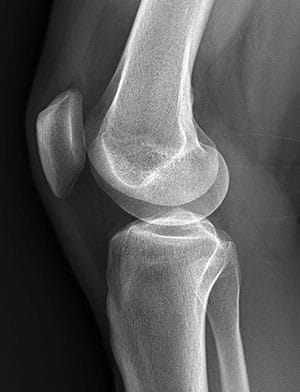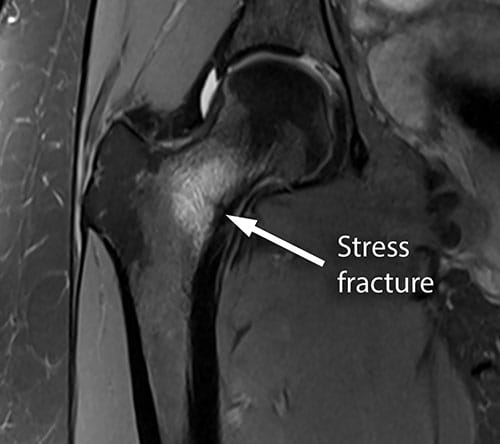Running injuries
Work your way out of knee pain (don’t just brace it!)
July 12,2017

Andrew L. Rosen, MD

If you line up at any running race you will see many runners wearing all manners of contraptions on their knees. Braces, straps, taping seem to be part of the standard wardrobe at these events. Although such devices do play a part in addressing runner’s knee problems, many people have never tried to fix the problem that has forced them to need help in the first place.
The vast majority of runners with knee problems have one or both of two basic running disorders. Patellofemoral knee pain (Runner’s knee) and iliotibial band syndrome. These problems are often combined and usually represent muscular issues that are at the root of the problem. I tell patients often that running doesn’t usually cause problems with trauma to the body, but simply amplifies pre-existing muscular imbalances that create pain in a leg when the repetitive forces of running are applied on a regular basis. Although some knee problems are structural (cartilage tears, arthritis, stress fractures), most basic knee pain is muscular in nature.
The two main muscular imbalances that can affect a runner are usually weakness of the inner portion of the quadriceps (the VMO) and tightness of the iliotibial band (outside of the thigh). Simply addressing these two issues can usually correct the patellar (kneecap) maltracking which occurs and improve the symptoms. The act of running is an inherently hamstring (back of the leg) muscular activity and often does not lead to strong, well-balanced quadriceps muscles with increased training. Although runners of course will have strong legs compared to a group that doesn’t run at all, the muscular development is often not well-balanced.
A simple program of inner quadriceps strengthening and IT band stretching is usually very effective in curing the symptoms and allowing a runner to perform pain-free. These exercises can often be learned through basic internet research. For a more comprehensive approach, a formal physical therapy consultation can be an excellent way to start. A good foam roller can be a powerful tool that should be a part of most runners equipment inventory.
Many runners find that the key to running without pain is all the work that is done outside of running. Developing a workout program that builds strong, well-balanced knees can be critical to keeping knees healthy with long-distance training.
Although braces can be helpful in decreasing symptoms and are sometimes helpful in keeping a runner going, they are rarely the first (or only) treatment that is recommended. Knee mechanics are usually better improved 'internally' with stretching and strengthening that will keep the knees running strong for years to come.
Take hip pain seriously
April 15,2017

Andrew L. Rosen, MD
Many runners will experience some discomfort in their hips if they push their mileage and intensity during training. Most pain in the legs for runners is muscular in nature and is often the result of weakness and tightness of the supporting muscles. Classified as ‘tendonitis’, these conditions will often improve with simple treatments such as rest, anti-inflammatories, stretching and strengthening. Unfortunately, not all pain in runners is benign in nature. The excess forces on the bones of the legs in runners can create stress fractures in any part of the leg, from the pelvis to the foot. Most stress fractures of the legs are painful but also benign and heal uneventfully with a period of rest.
The hip is a unique joint
The hip is a special area because of the angle of the hip bone (femur) that receives substantially increased force with weight bearing compared to any other part of the leg. This bone has a potential to fully break (fracture) which can be catastrophic. A full fracture of the hip requires surgical treatment with insertion of large metal screws. The long-term consequence of these fractures can be even worse with bone necrosis which could even require a hip replacement.

How to diagnosis a stress fracture
Because of the unique severity of stress fractures of the hip, sports medicine doctors are often much more aggressive with diagnosing hip conditions with an MRI scan which is usually able to determine if a fracture is present. The MRI also gives us information on how severe the fracture is and helps estimate the risk of complete fracture.
Signs of a possible stress fracture of the hip
• Pain located in the groin or front of the top thigh area
• Pain with contact of the leg on the ground
• Pain that worsens during a run
Should a runner get their hip checked?
The hip is one area that demands medical attention for pain that does not improve quickly. Not every ache in the hip requires an immediate trip to the orthopaedic surgeon, however pain that doesn’t improve with basic rest should be considered carefully.
It is especially important to be certain that a stress fracture isn’t present if soreness in the hip is present prior to a long race. Every year, marathon medical services are called to assist a runner who falls down when a full fracture occurs during a race. This is an avoidable catastrophe that informed runners should all be able to avoid.
Spring is a great time for running injuries (unfortunately)
March 18,2017

Andrew L. Rosen, MD
As the winter fades, many of us see the warmer days and longer daylight hours as a driving force to get back in shape. Although many of us still enjoy running in cold conditions year-round, it’s very hard not to get excited by the chance to start shedding layers and run outside.
Unfortunately, spring is also a very common time for running injuries to occur. Increased weakly mileage, increasing speed and frequency of runs can be a recipe for trouble if the legs are not ready for it. Many of us sign up for spring races many months in advance, putting pressure on ourselves to get back into shape to perform. Even without a specific race goal driving our training, it is important to plan a spring running program carefully.
Avoiding injuries
The most important way to stay out of the orthopaedic surgeon’s office is to carefully control a training program. Time spent making a careful plan of increasing workouts can be very effective in allowing a runner’s legs to acclimate and stay below the threshold for injuries. Key components include:
• Slow increases in weekly mileage
• Avoiding frequent back-to-back daily runs initially, allow for recovery time. Cross-train on recovery days to vary the forces across the legs.
• Working in speed and hill intervals slowly. Don’t try and hit the same high-intensity splits you did in the fall when in peak shape
Other tips
• Replace worn out shoes with new ones to decrease stress across the legs
• Make sure the rest of the body is strong – core and quadriceps strengthening exercises are vital to reduce stress and maintain balance during running.
• Don’t forget to stretch – hamstrings and calves especially need to be loosened up before and after runs. Simple stretches or devices like foam rollers should not be neglected as a runner increases activities.